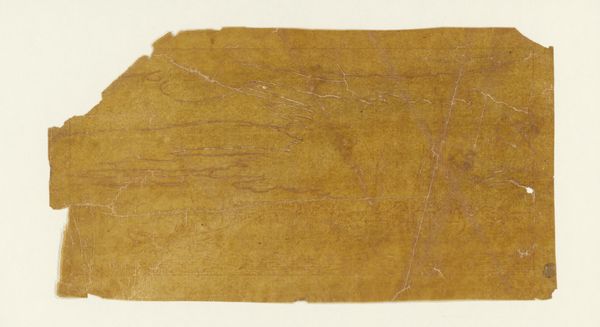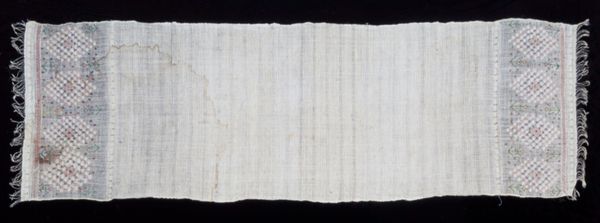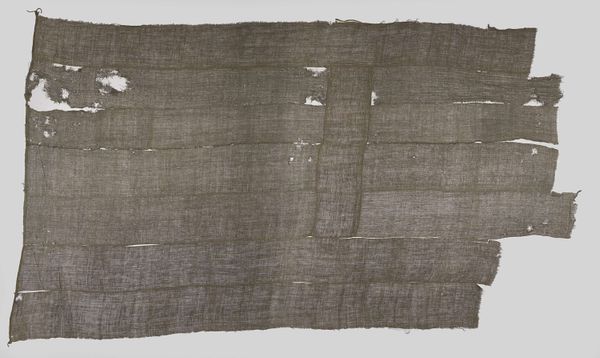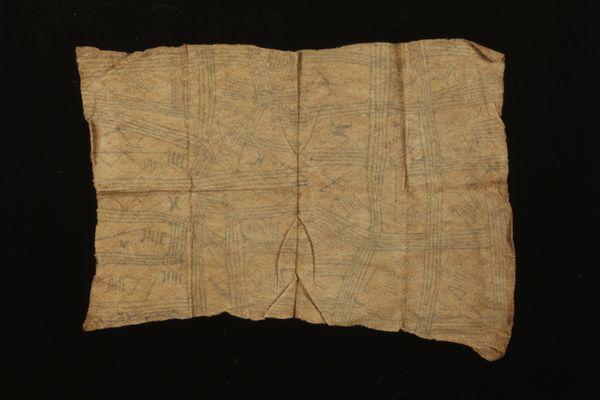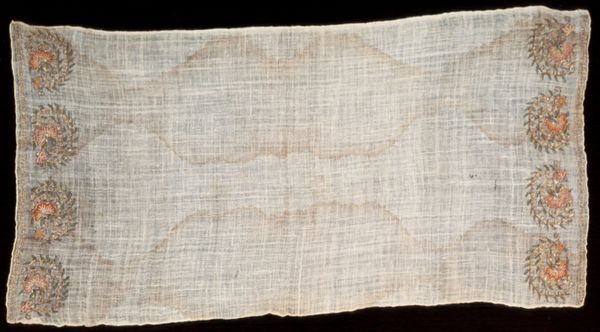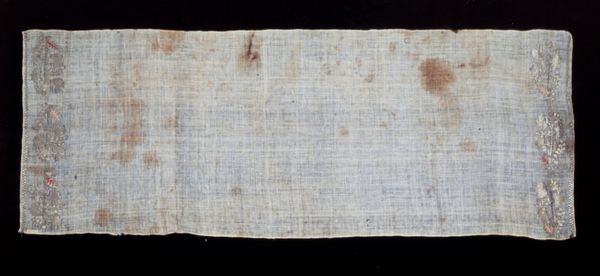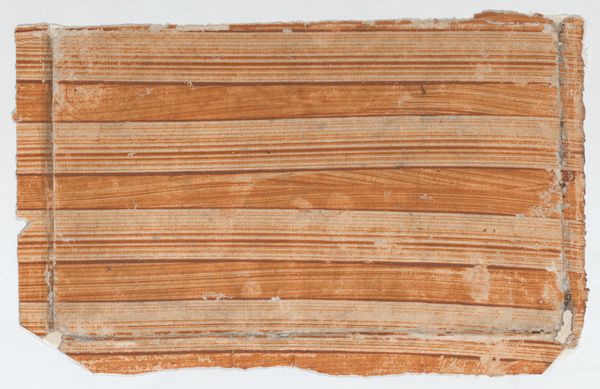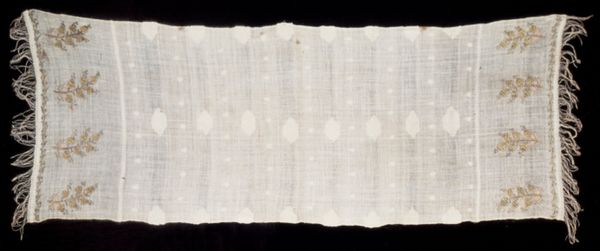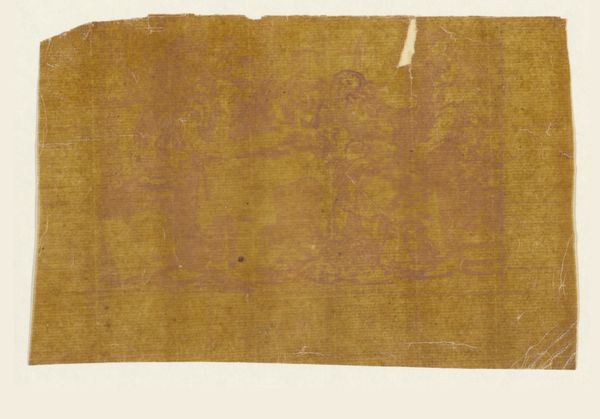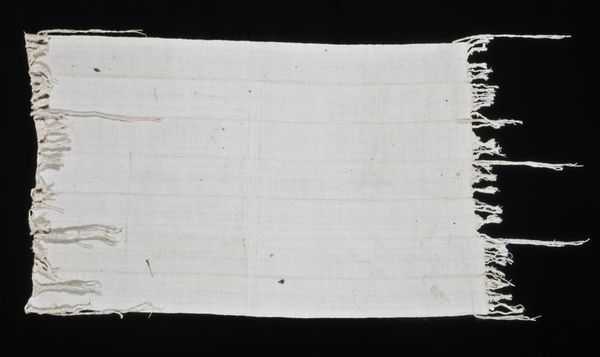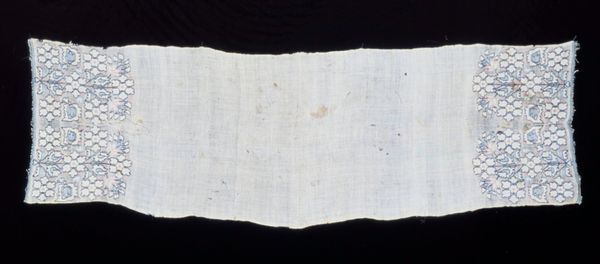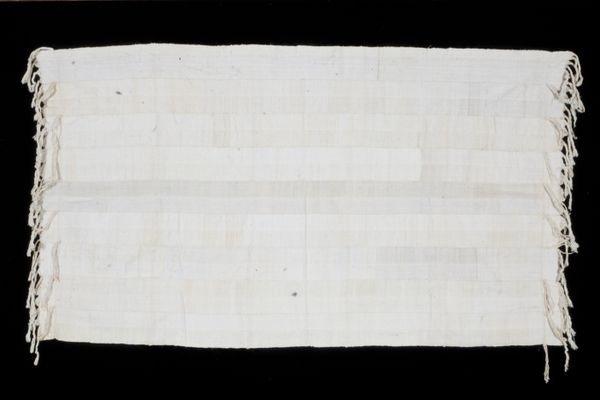
fibre-art, textile
#
fibre-art
#
landscape
#
textile
#
natural texture
#
organic texture
Dimensions: height 120 cm, width 249 cm
Copyright: Rijks Museum: Open Domain
Curator: Before us hangs "Flag," a textile work created before 1822 by an anonymous artist. Its very form invites consideration of texture and composition. Editor: There's an austerity to it. It speaks of exposure and time, of natural processes left to run their course. I can almost smell the earth it came from. Curator: Indeed. Observe how the artist—or craftsperson, if you prefer—employs the weft and warp to generate a spatial effect, pushing against a purely flat reading of the surface. Note also the significance of the seemingly arbitrary placement of these abrasions. Editor: But these "abrasions," as you term them, these losses of material are integral, aren’t they? It’s not about a composition in the traditional sense. The degradation is the composition, a collaboration with entropy, pointing to labor and its consequences over time. How many hands and what purposes shaped this textile and led to its ultimate disrepair? Curator: One could argue the missing parts generate absence as a powerful formal tool; that negative space reshapes how we perceive the solid ground. It evokes concepts explored later in arte povera, that any mark transforms the raw object into art. The materiality is merely the catalyst. Editor: If we strip away all consideration of context, of who made this, what materials and techniques did they use and how were these accessed? Reducing it to mere shapes is a distortion. This isn't about art for art’s sake. Curator: But within this, its starkness also lies its aesthetic force, its compositional tension created between pattern, absence, color, and the implications of intentional visual action, a semiotic narrative where this textile gains artistic significance. Editor: Maybe what truly speaks here, ultimately, is that, perhaps even accidentally, it still has some potency to compel dialogue across our very different orientations toward art, which itself says something, doesn’t it? Curator: Indeed, the discourse and interpretations form the work of art anew with each examination, just as each warp informs the weave of time's artistic interventions on textiles.
Comments
No comments
Be the first to comment and join the conversation on the ultimate creative platform.
